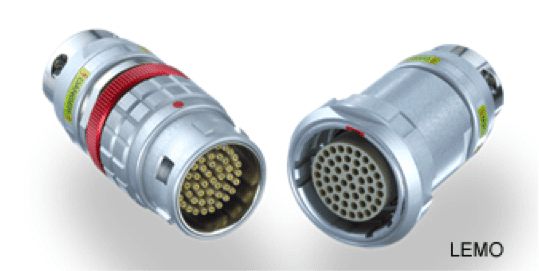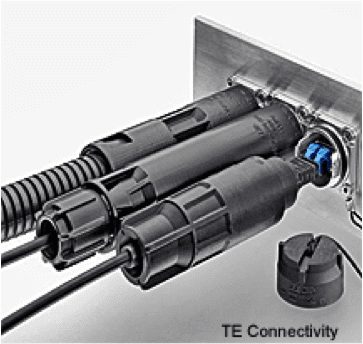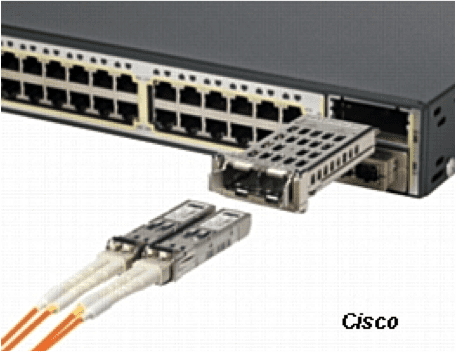5G Connectivity Expands Connector Applications
We live in an age of technology disruptions. But 5G will make even bigger disruptions possible.
We are about to experience a major transformation in the area of wireless communication.
Cellular communication networks have been on a path of continuous evolution since the first analog phones were introduced in the 1980s. With 1G starting at 2.4kb/s, each successive iteration upped performance in steps to the current mobile 4G LTE version operating at 100Mb/s. As speeds and reliability increased, a rapidly expanding universe of applications became practical.

The next iteration now on the horizon is poised to blow the doors off what has been possible and impact every aspect of how we communicate, manufacture things, gather information, deliver healthcare, and entertain ourselves. 5G will expand cloud computing as well as deliver on the promise of the Internet of Things. In addition to providing up to 1.4Gb/s network speeds, latency will be dramatically reduced. The ability to support many more connected devices with greater network efficiency will make the transition to 5G irresistible.
The introduction of 5G service will likely upend mobile cellular as well as fixed broadband markets. With speeds approaching that of cable and even fiber optic fiber-to-the-home services, 5G has the potential to change the way consumers access the internet, disrupting established cable and DSL providers.
System engineers had to entirely rethink the architecture and technology of 5G cellular communication systems. To increase speed and system capacity, designers chose to utilize multiple higher frequency bands, including millimeter (mm wave frequencies of up to 52.6GHz). The laws of physics balance high-speed transmission with reduced signal propagation range. The higher the frequency, the greater the signal distortion due to attenuation over distance and through obstructions. A 5G phone located inside a building or a user simply covering the integrated antenna with a hand could result in a loss of connection. In order to solve this challenge 5G cellular networks will require a massive increase in the number of cellular antennas. Another part of the solution is the use of massive multiple-input multiple-output (massive MIMO) technology enabled by base stations outfitted with up to 100 active antennas utilizing beamforming technology that can establish point-to-point links to individual devices.
5G networks will not spring up overnight but will likely be deployed in a variety of flavors in select locations around the world. The first draft 5G specification was released in December 2017, and was followed by a series of updated releases, options, and non-standard iterations that define frequency bands, speeds, as well as insure backward compatibility with existing 4G-enabled phones. Those who anticipate being in the market for a new cellphone may want to be sure that the device supports both 4 and 5G protocols. A standard that delivers the full potential of 5G is expected in 2019. The current focus is on bridging the gap between 4G LTE and 5G networks.
The race to claim leadership in 5G technology has become a political issue between the US, China, South Korea, and Japan. China has committed $400 billion to 5G investment over the next five years. Countries that are first to implement 5G networks will be able to lead in developing critical applications, including artificial intelligence, autonomous transportation, virtual reality, real-time healthcare, and Industry 4.0 manufacturing technology. The jobs and revenue these applications generate will have a long-term impact on the economic health of nations for years to come. The massive investments now being made will leave other countries at a competitive disadvantage.
AT&T may be the first domestic provider to offer standards-based 5G by launching 5G service in 12 US cities before the end of 2018. Initial activations will be spotty as the bugs are worked out at test installations. Most players are targeting 2020 for the start of broad market implementations which will likely focus on high-density urban locations.

The transition to 5G will require a huge upgrade of the existing cellular network infrastructure. Thousands of new base stations and towers will require miniature RF connectors and cable assemblies designed to support designated spectrum of 3.5, 28, and 39GHz for initial 5G launches.
RF coaxial connector styles such as SMA, SMP, 2.92mm, 2.4mm, and 1.85mm will find many new applications.

Mobile switch and base stations will use a variety of power and signal connectors. Connector manufacturers such as LEMO are promoting a variety of sealed circular connectors to address 5G base station applications.

The current network of macro cellular towers will require upgrade and augmentation with a dense new grid of full spectrum distributed micro, pico, and femto cells that will extend 5G service to users inside of offices, factories, and shopping centers. Coaxial cables that link an array of internal antennas to a distribution hub will be in high demand.
Electronics located in cellular towers that are exposed to weather will require connectors designed to survive harsh environments. FullAXS Mini Connectors from TE Connectivity and HUBER + SUHNER enable IP67 sealed copper and fiber interfaces that are designed for rugged blind mating applications.
TE Connectivity recently introduced the ERFV RF coax stacking PCB connector system specifically targeting 5G applications. These contacts are rated to 10GHz with stack heights from 5.2 to 20mm.
Connector manufacturers such as Amphenol, HUBER+SUHNER, Molex, and TE Connectivity that feature antenna technology are offering related connectors and antenna assemblies to help their customers build simplified, fully compatible systems.

Upgraded equipment in the data center will increase demand for high-performance backplane and mezzanine connectors as well as power distribution interfaces. Vastly increased data traffic in front and backhaul equipment will require new high-speed interconnects, including SFP+, SFP28, and QSFP28 I/O, as well as fiber optic patch cords and jumpers. High performance SAS, Fibre Channel, InfiniBand, and 10G Ethernet copper cable assemblies as well as active optical cables can help bring existing architecture up to speed. RF filters may also see a sales bump related to deployment of 5G networks.
The 5G revolution has energized the cellular communication industry. The prospect of 10X to 100X data transfer performance is no longer a distant objective, but an emerging opportunity for connector manufacturers that offer copper and fiber interfaces as well as related devices that will be in demand as this new technology is rolled out over the next few years.
Interested in a specific market? Click a market below for current articles and news.
Automotive, Consumer, Industrial, Medical, Mil/Aero, Datacom/Telecom, and Transportation
- Optics Outpace Copper at OFC 2024 - April 16, 2024
- Digital Lighting Enhances your Theatrical Experience - March 5, 2024
- DesignCon 2024 in Review - February 13, 2024












